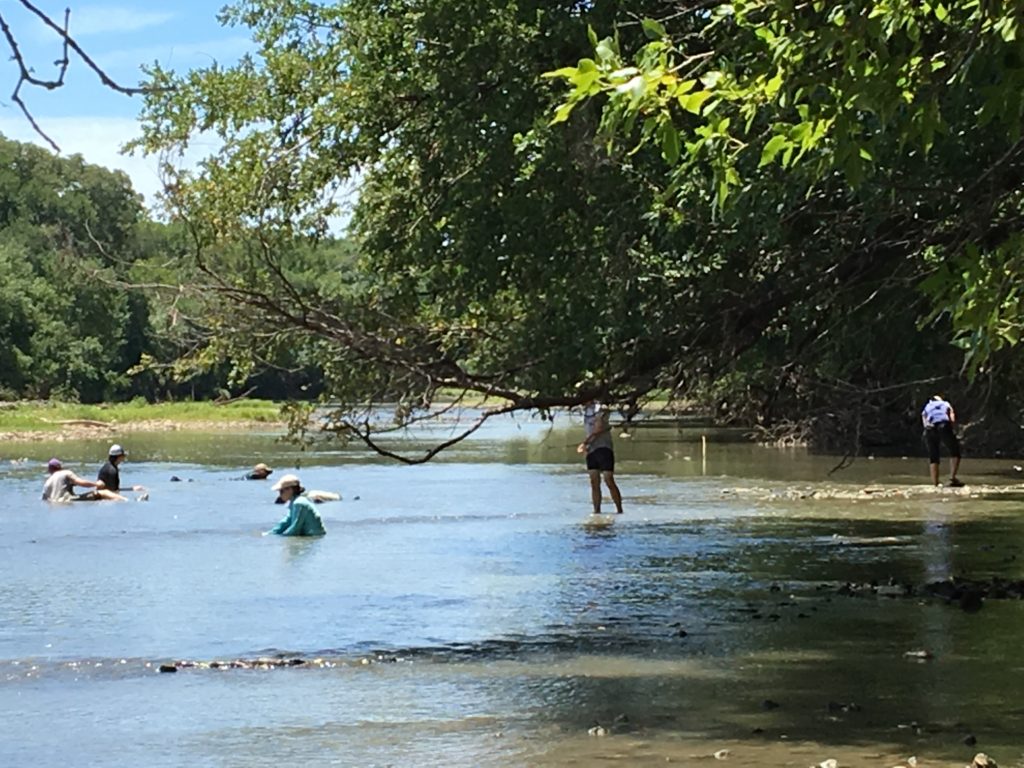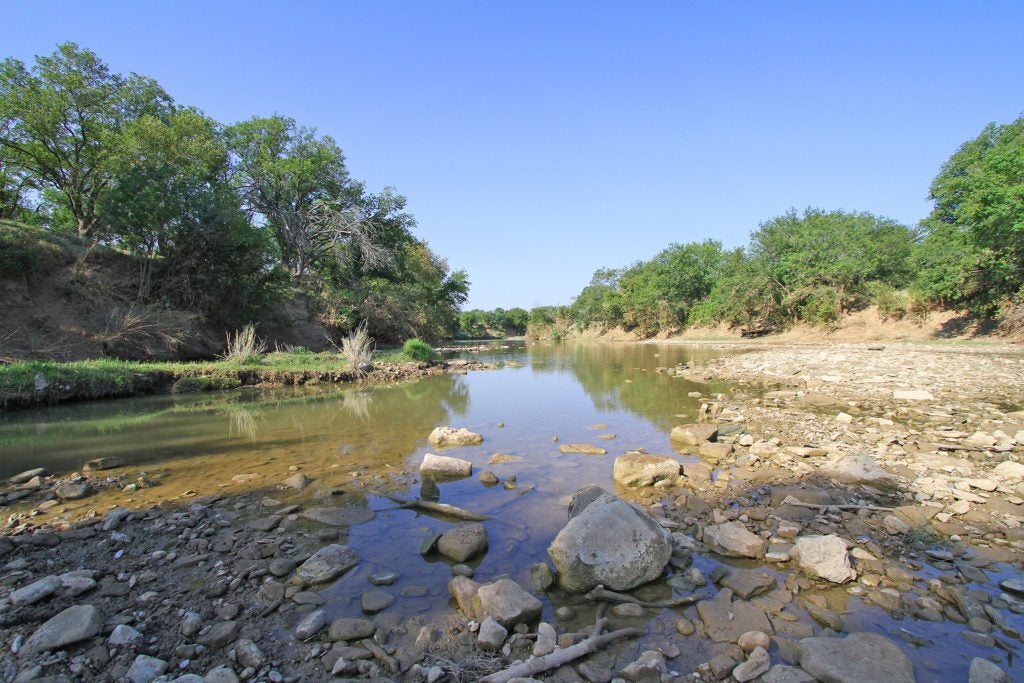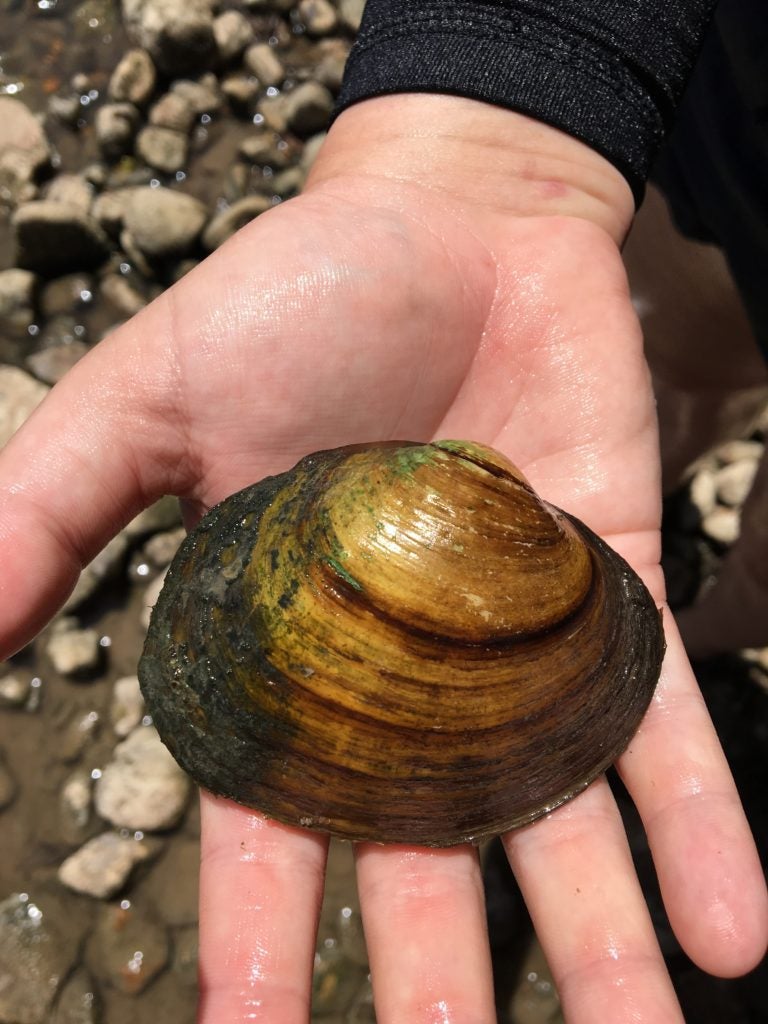
Freshwater ecosystems are some of the most diverse ecological systems in the world despite covering only 0.8% of the Earth’s surface (Gleick 1996). In terms of freshwater mussels, North America has the highest diversity in the world with approximately 297 species (Ricciardi et al. 1998). However, they are also some of the most imperiled with 67% of North American species considered threatened (Williams et al. 1993). There are 53 known species in Texas of which 15 are listed as state threatened; one of these is a candidate for federal protection and 11 others are currently petitioned for listing under the US Endangered Species Act (Winemiller et al. 2010). Recent surveys conducted by TSU grad students (Leah Woolam and Austin Kaulfus) as well as professionals from Bio-West and Texas Parks and Wildlife Department revealed existing populations of Texas pimpleback (Quadrula petrina) and smooth pimpleback (Quadrula houstonensis) just downstream from Timberlake Biological Field Station (TBFS).

In general, there are five major threats to freshwater biodiversity, which include over-exploitation, water pollution, habitat degradation, species invasion, and flow modification (Dudgeon et al. 2006). These factors negatively affect various aspects of a freshwater mussel’s life cycle. Freshwater mussels are broadcast spawners in which males release sperm into the water that is then drawn in to the female via her incurrent siphon. Fertilized eggs are retained internally while they develop into glochidia, which when mature will be released into the water column attaching to the gills, fins, or scales of their freshwater fish host. Over the next several weeks, the glochidia develop gills, a foot, and other internal structures to become a juvenile mussel. It is at this point that the fully transformed juvenile will drop off the fish and begin its life on the stream bottom. Mussels vary considerably in their habitat preferences; some species prefer swift flows with coarse rocky substrate, while others prefer shallow areas composed of silt-sand substrate.

For mark-recapture purposes, researchers will attach Passive Integrated Transponders (PIT tags) to the outer anterior margin of every live specimen using marine grade superglue. Researchers will sample each population using visual and tactile searches biweekly beginning March 2017 through November 2017 and again March 2018 through November 2018. All live mussels collected within each quadrat will be measured for length, aged, and coded for shell wear. Mussels will be measured for length along the longest line parallel to the hinge line. In addition to surveying freshwater mussels, researchers will quantify various aspects of the habitat including temperature (°C), salinity (ppt), dissolved oxygen (mg/L), pH (standard units), turbidity (NTU), current velocity (m/s), and water depth (cm) at the center of each sampled quadrat. In addition, we will characterize the substrate in each quadrat by classifying the dominant sediment size into one of six categories using a modified Wentworth classification scheme (Cummings 1962): (0) silt and clay, < 0.059 mm; (1) sand, 0.06-1 mm; (2) gravel, 2-15 mm; (3) pebble, 16-63 mm; (4) cobble, 64-256 mm; and (5) boulder, > 256 mm.